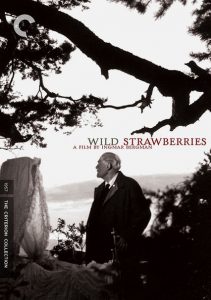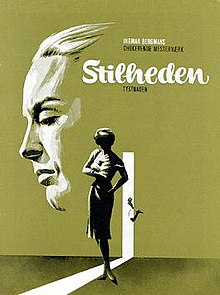Wild Strawberries-1957
Director Ingmar Bergman
Starring Victor Sjostrom, Bibi Andersson
Top 250 Films #82
Scott’s Review #1,111
Reviewed February 10, 2021
Grade: A
A seventy-eight-year-old man (Victor Sjostrom) reflects on life, loss, and a million other emotions as he ponders his inevitable death in the Ingmar Bergman masterpiece Wild Strawberries (1957).
The film’s melancholy tone forces viewers to imagine themselves in the older man’s shoes and wonder how senior citizens view death. One significant point is that it represents the geriatric demographic, which has traditionally been lacking in cinema.
It’s cerebral and reminds me of A Christmas Carol since an older man struggles over his forgotten and sometimes misbegotten youth.
Bergman creates genius on par with his most famous work, The Seventh Seal, also released in 1957. I’d list these two films as his very best and most inspiring.
Do older people fear death? Do they whimsically revisit their youth from time to time, or do they live with regret and unfulfilled desires?
My hunch is that it’s probably a bit of all.
Wild Strawberries made me think like the older man and the effect was powerful. They made me worry about my death and relive my glory days.
Isak Borg (Sjostrom) begins to reflect on his life after he takes a road trip from his home in Stockholm to the distant town of Lund to receive a special award. Along the way, a string of encounters causes him to experience hallucinations that expose his insecurities and fears.
He realizes that his choices have rendered his life meaningless, or so he perceives it.
He is accompanied by his daughter-in-law Marianne (Ingrid Thulin), who doesn’t like Isak too much, is pregnant, and plans to leave her husband. They meet a trio of friendly hitchhikers led by Sara (Bibi Andersson), who reminds Isak of the love of his youth.
A bickering couple reminds him of his unhappy marriage, while his elderly mother reminds him of himself.
The best part is when the group stops at Isak’s childhood seaside home and imagines his sweetheart, Sara, with whom he remembered gathering strawberries but who instead married his brother.
Anyone who has returned to their childhood home or neighborhood can easily relate to the powerful memories. I pretended I was in Isak’s character, and several emotions occurred.
Sjostrom infuses a natural range of emotions. At first, crotchety and distant, I admired his sentimentality as he fondly recalls innocently picking strawberries on a summer day. How glorious and innocent it is to reminisce in a mundane yet monumental act.
Although he was an older man, he was once young. How quickly the years pass. I took this as a lesson to appreciate each day and experience. Sjostrom had me mesmerized.
Some find Izak unsympathetic. I found him incredibly likable.
Relationships are a strong element of Wild Strawberries. Izak muses over past loves, his mother, daughter-in-law, housekeeper, and hitchhikers. Peculiar is his relationship with his housekeeper, Agda, who is played stunningly well by Julian Kindahl.
Are they secret lovers or platonic friends? They seem like husband and wife.
While the story is astounding, the visual qualities of Wild Strawberries are exceptional.
The video content is crisp and clear, with very bright black-and-white photography. Each shot is mesmerizing and reminiscent of paintings.
There is so much going on in Wild Strawberries. The closest adjectives to describe the experience are hallucinogenic and mesmerizing.
The people gathered over a meal were young, fresh, and carefree. They all have lives ahead of them, and almost every viewer can recount a time when they felt that way.
It’s both nostalgic and sad to realize it doesn’t last, as Bergman makes so painfully evident.
The scene where Isak witnesses a hearse approaching is terrifying. When he realizes it is himself lying in the casket, it gives one a chill. The scene is creepy and powerful in tone and effect.
Wild Strawberries (1957) explores many facets of the human experience, including sorrow, joy, depression, acceptance, frustration, and fulfillment.
This is a work of genius and is highly recommended to anyone who appreciates excellent experiences in cinema.
Oscar Nominations: Best Original Screenplay

